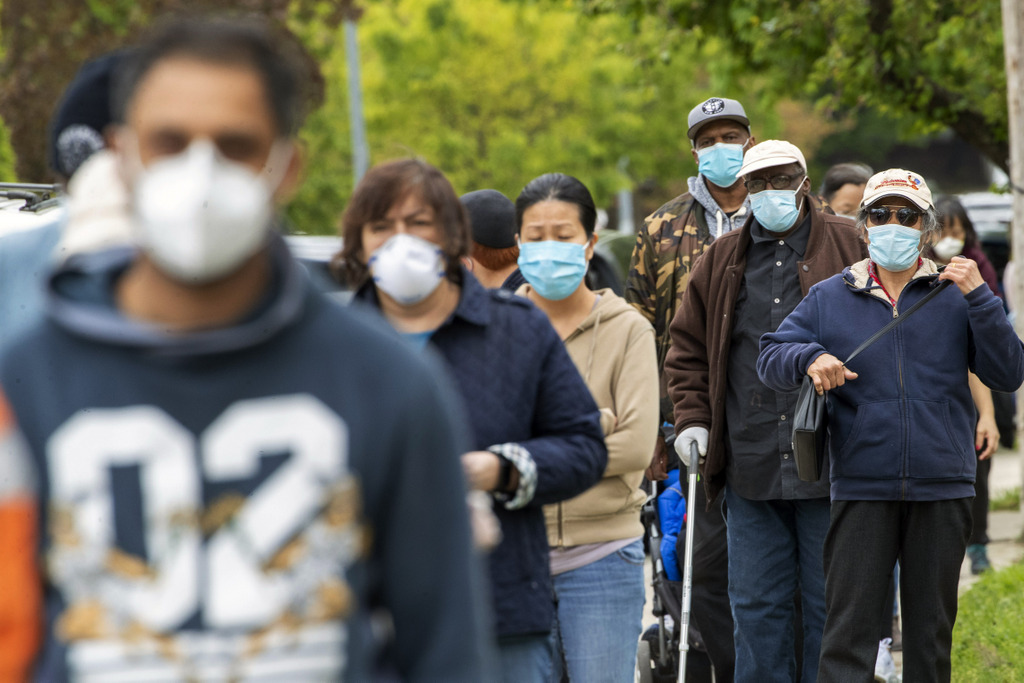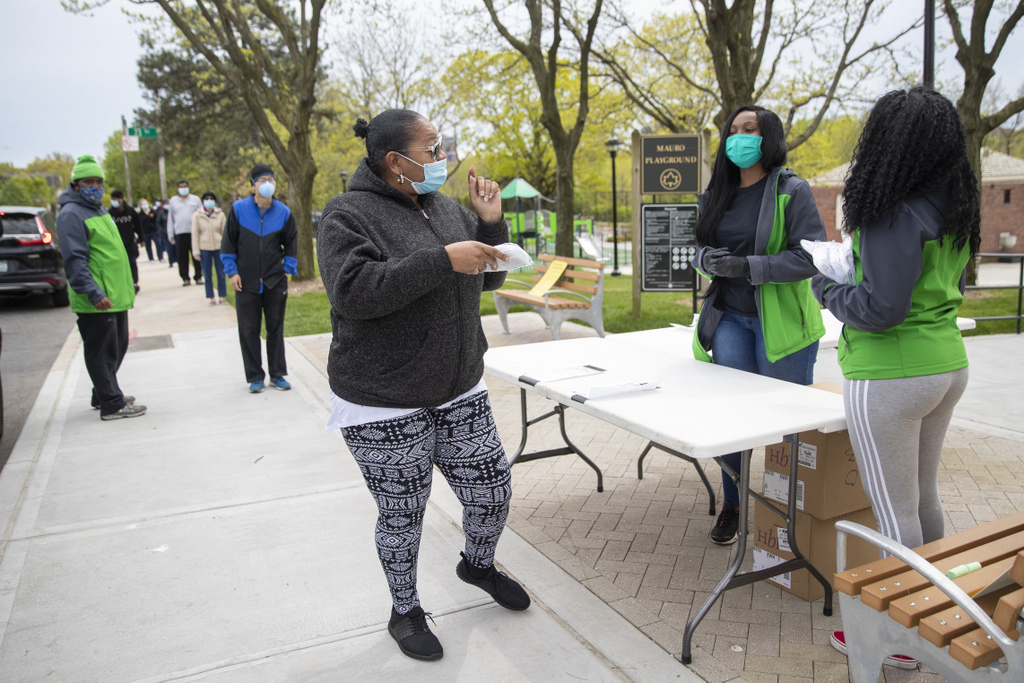[ad_1]
By MARINA VILLENEUVE and MICHAEL HILL, Associated Press
ALBANY, N.Y. (AP) — New York Gov. Andrew Cuomo argued that officials who are reopening economies need to be upfront about the human costs. New York City Mayor Bill de Blasio said he is adding staff to the city’s deluged 311 helpline, and police prepared for nightly subway closures.
Coronavirus developments in New York:
___
HUMAN COST
Cuomo said the national debate over when to reopen outbreak-ravaged economies ultimately boils down to the value placed on people’s lives.
“How much is a human life worth?” Cuomo asked at his daily news briefing. “That’s the real discussion that no one is admitting openly or freely. But we should.”

The Democratic governor made the argument as political pressure intensifies to relax outbreak-fighting restrictions keeping people at home and off the job. As other states begin lifting restrictions, Cuomo has opted for a slower approach that will allow parts of the state to phase in economic activity later this month if they meet and maintain a series of benchmarks.
“The faster we reopen, the lower the economic cost — but the higher the human cost, because the more lives lost,” he said. “That, my friends, is the decision we are really making.”
Cuomo claims his plan avoids the trade-off between economic and human costs because it will be controlled by officials constantly monitoring fatalities and hospitalizations.
The 230 new deaths reported by Cuomo were up slightly from the previous day, but far lower than the daily peak of 799 on April 8. There have been more than 19,000 deaths in New York since the beginning of the outbreak.
The state total doesn’t include more than 5,300 New York City deaths that were blamed on the virus on death certificates but weren’t confirmed by a lab test.
New York’s hospitalization rates continue to drop with 659 new admissions reported Monday, the lowest number since March. There were 9,600 patients hospitalized overall.
___
HELP LINE DELUGED
The coronavirus case surge that swamped New York City’s 911 emergency line last month also deluged its 311 help line, with calls soaring from an average of 55,000 a day to about 200,000 daily. Wait times grew long in some cases.

To tackle the problem, the city has trained 285 new call takers and added four new call centers, de Blasio said Tuesday. He said the city also is creating 311 “express lanes” for COVID-19 matters and needs for food, so those calls would be taken with minimal wait times most of the day.
The 311 help line was designed to handle nonemergency calls ranging from noise complaints to questions about jail visits.
De Blasio said typical wait times have dropped by 75% at peak-volume times.
In the 911 system, the virus spurred the busiest days ever for the city’s emergency medical operations. Requests for ambulance service hit a record 6,527 calls on March 30, over 50% more than average. They have since dropped to around normal levels of about 4,000 per day.
__
SUBWAY SHUTDOWN
Starting Wednesday, New York City’s normally 24/7 subway system will shut down from 1 a.m. to 5 a.m. each day to clean trains and stations and kick out homeless people who have been taking up residence in subway cars.
The police department is deploying more than 1,000 officers to secure many of the system’s 472 stations. Fewer than 200 stations can be physically locked up during the shutdown.
Homeless outreach teams, consisting of officers and nurses, will be sent to 29 end-of-line stations to roust homeless people from trains that are headed out of service for cleaning, Chief of Department Terence Monahan said Tuesday.
The police department has been increasing subway patrols in advance of the shutdown, removing about 20 homeless people per night. Most are taken to shelters, but an average of about two per night are being hospitalized for mental health evaluations at the recommendation of an outreach team nurse.
“This is a huge undertaking,” Monahan said.
Although until now 24/7, the subway system has been working on a reduced schedule since March 25. Even in normal times, overnight subway service is reduced.
___
NURSING HOMES
New York state is reporting more than 1,700 previously undisclosed deaths at nursing homes and adult care facilities as the state faces scrutiny over how it’s protected vulnerable residents during the coronavirus pandemic.
At least 4,813 people have died from COVID-19 in the state’s nursing homes since March 1, according to a tally released by Cuomo’s administration late Monday that, for the first time, includes people believed to have been killed by the coronavirus before their diagnoses could be confirmed by a lab test.
[ad_2]
Source link
